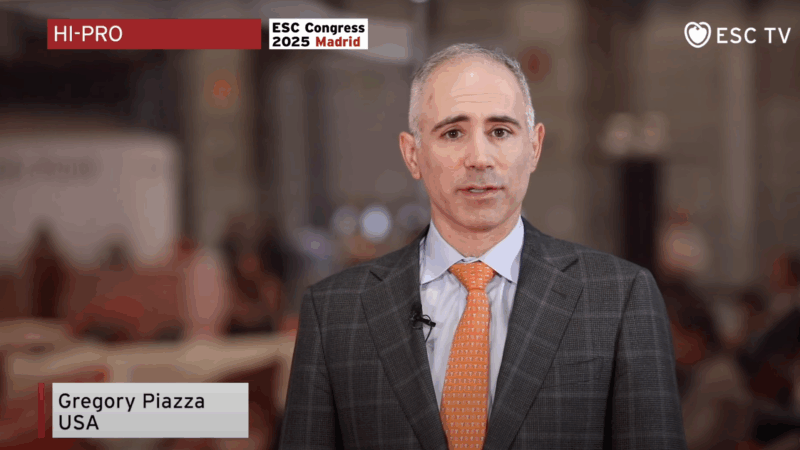
Gregory Piazza Presents HI-PRO Trial Results on VTE at ESC Congress
Gregory Piazza, Director of the Vascular Medicine Section at Brigham and Women’s Hospital, posted on LinkedIn:
‘‘Venous thromboembolism (VTE) has traditionally been categorized as unprovoked and treated with extended anticoagulation or provoked and prescribed time-limited anticoagulation for 3 months.
What do we do with patients who have provoked events but other persistent risk factors like obesity or heart disease?
We answered this question in the HI-PRO randomized controlled trial presented in Madrid at the European Society of Cardiology Congress and simultaneously published in the New England Journal of Medicine.
The culmination of 5 years of blood, sweat, and almost tears, it would not have been possible without an amazing team, my co-investigators and the Thrombosis Research Group team!”
Watch the full video here.
Read the full article in NEJM.
Article: Apixaban for Extended Treatment of Provoked Venous Thromboembolism
Authors: Gregory Piazza, Behnood Bikdeli, Arvind Pandey, Darsiya Krishnathasan, Candrika Khairani, Antoine Bejjani, Ruth Morrison, Heather Hogan, Sina Rashedi, Mariana Pfeferman, Junyang Lou, John Fanikos, Nicole Porio, Lisa Rosenbaum, Piotr Sobieszczyk, Zhou Lan, Marie Gerhard-Herman, Umberto Campia, Samuel Goldhaber

Stay updated on all scientific advances in the field of thrombosis with Hemostasis Today.
-
Dec 17, 2025, 15:24Laura Dormer on a Motor Relearning Program for Chronic Stroke Patients
-
Dec 17, 2025, 15:01WSO: United Nations Has Formally Adopted the Political Declaration on NCDs and Mental Health
-
Dec 17, 2025, 14:44Bryan Unger: 1st Patient Has Been Enrolled in NuvOx Therapeutics’ Phase IIb NOVEL Trial
-
Dec 17, 2025, 14:29Sarah Richardson: Feeling So Proud to Be a Part of the Advocacy Team for the HFA
-
Dec 17, 2025, 06:28Wolfgang Miesbach on Linus Völker’s Presentation of Caplacizumab as Frontline Therapy for iTTP
-
Dec 17, 2025, 06:11Lisa Murphy Thanks Stroke Foundation Team for An Impactful, Rewarding and Incredible Year
-
Dec 17, 2025, 06:05Emmanuel J Favaloro Shares A Study on AI and Machine Learning in Thrombosis and Hemostasis
-
Dec 17, 2025, 05:54Michael Bruckman: Fantastic to See Platelet-Inspired Nanoparticles Gaining Attention!
-
Dec 17, 2025, 04:00Peter Verhamme on Genetic Predisposition to Thromboembolism and COVID
